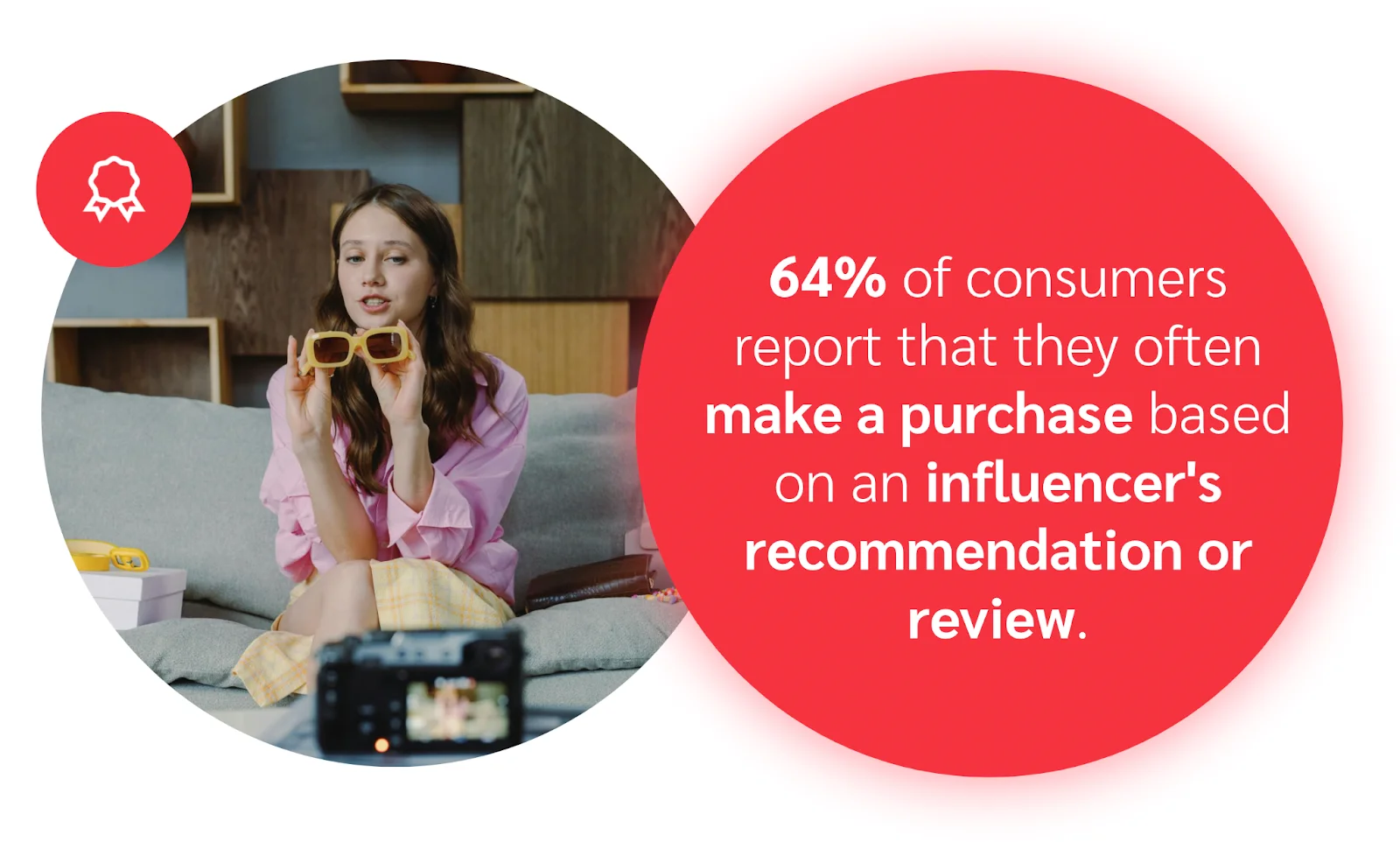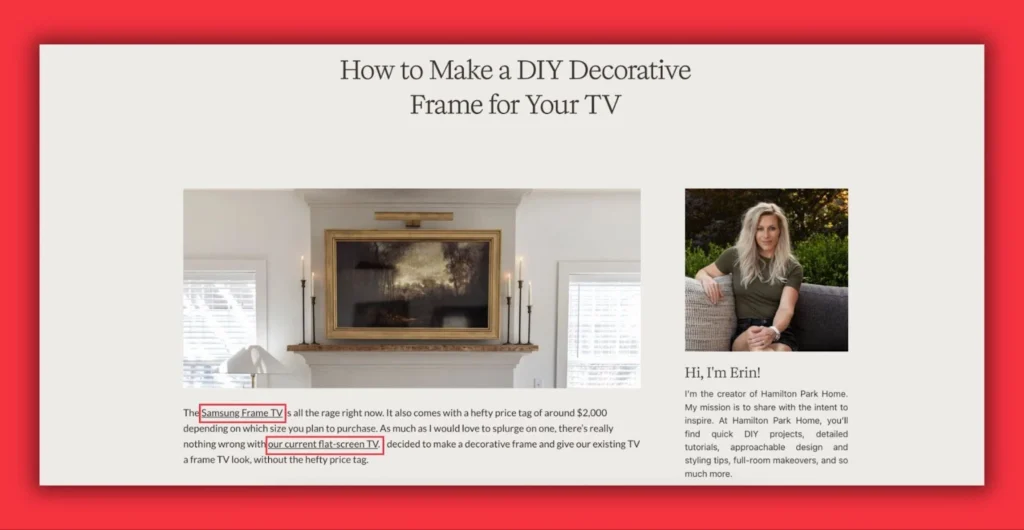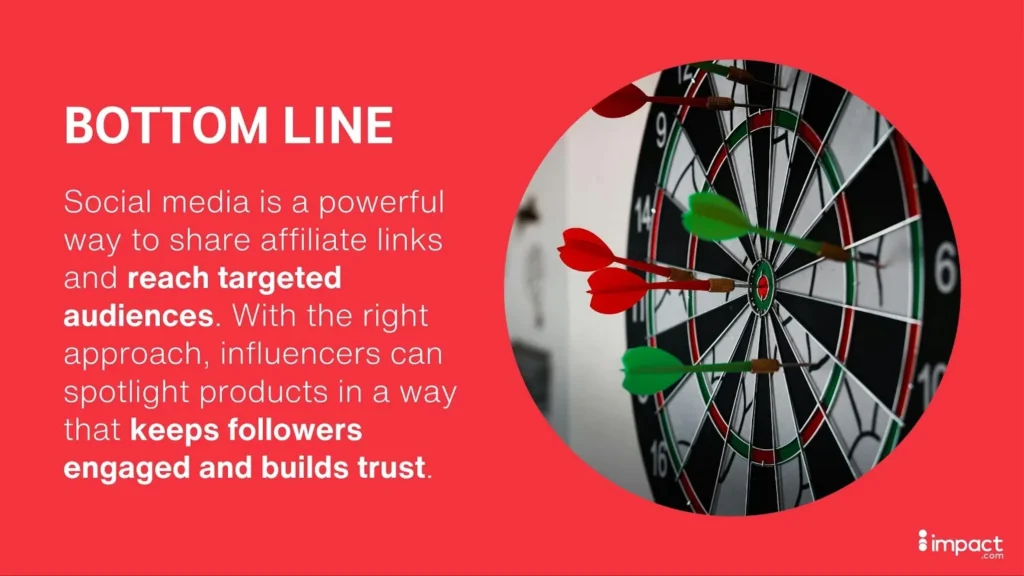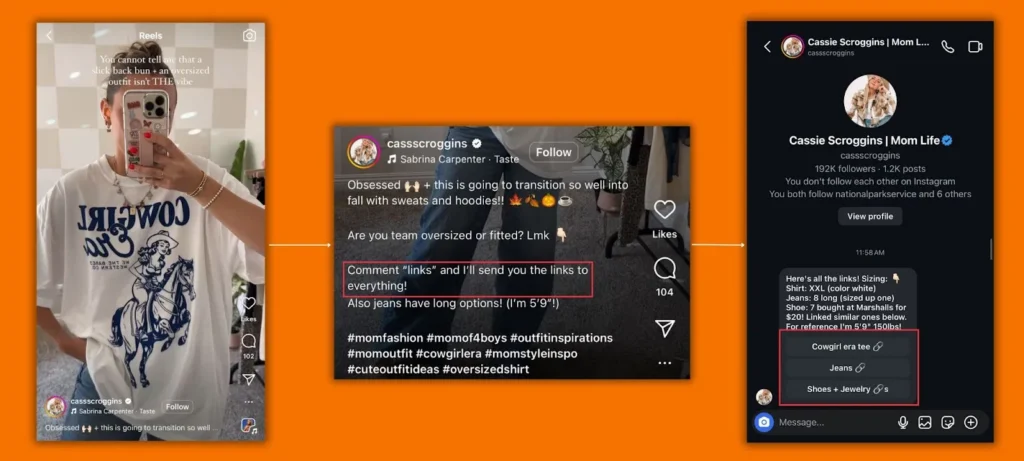A reported 64 percent of consumers make purchases based on influencer recommendations. This shift in buying behavior presents a major opportunity: combining influencer reach with affiliate marketing’s measurable results.
Most brands still treat these as separate channels. But forward-thinking marketers integrate them to drive conversions, track attribution, and build lasting partnerships with proven ROI.
This guide shows you how to transform influencers into high-performing affiliates. You’ll learn:
- Setting up influencer affiliate programs
- Creating compelling incentive structures
- Measuring and optimizing performance
- Maintaining authenticity while driving sales
Whether you’re expanding an existing affiliate program or starting fresh with influencer partnerships, you’ll discover how to leverage creators as a powerful sales channel.
Table of contents:
- How influencers fit into your affiliate strategy
- Where influencers share affiliate links and promo codes
Not your average affiliate: How influencers fit into your affiliate strategy
When you think of affiliate marketing, publishers or websites promoting links might come to mind.
Brands often use influencers to build brand awareness at the top of the funnel. However, influencers can be equally powerful affiliates for brands. They have a unique edge since they connect with people in a genuine way.

Source: The state of influencer marketing for consumers
Personal product recommendations are rapidly replacing advertising. According to Nielsen, 89 percent of people trust recommendations from people they know. And as consumers spend more time on social media, those people are often influencers.
Bringing them into your affiliate strategy lets you tap into that credibility.
Influencers transform product links and promo codes into trusted recommendations, connecting your brand with ready-to-buy audiences who value their advice. This targeted approach drives higher conversion rates and more qualified traffic.
How promo codes work for influencers and consumers
Promo codes encourage people to purchase––30 percent of consumers will buy a product if an influencer offers a promo code for a large discount.
Influencers share unique codes, often branded with their name or handle, that are simple to remember. Then, consumers enter the code at checkout to receive a discount or special offer.
By tracking code usage, brands can also gain valuable insights into each influencer’s impact.
These codes can be:
- Short-term: Drives sales for a certain product or campaign within a specific time window.
- Evergreen: Used to partner with creators for longer.
Selecting the appropriate code type depends on your strategy and approach to partnering with and compensating creators.

Dani Austin Ramirez promotes her promo code for Divi’s Whipped Repair Treatment Mask in her Instagram post description.
The most common compensation types for influencer affiliates
Some popular ways to compensate influencers include:
- Cost per action (CPA): Influencers earn either a percentage-based or flat-fee commission for specific actions like completed purchases.
- Cost per click (CPC): Brands pay influencers for every click their affiliate link generates, driving traffic directly to your site.
- Cost per lead (CPL): Influencers receive compensation when people take an initial step toward conversion, such as signing up for a newsletter or registering.
- Hybrid payment model: Brands mix upfront payments with affiliate commissions, giving influencers extra motivation to spread the word and boost conversions.
Where influencers share affiliate links and promo codes
Influencers have tons of ways to share affiliate links and promo codes, each offering unique benefits and challenges.
Influencers seamlessly integrate product recommendations across multiple channels, from detailed blog posts to direct messaging platforms.
Blogs
Influencers use various blog content types to showcase affiliate products, such as:
- Product comparisons
- Reviews
- Gift guides
- Listicles
Influencers can detail their experiences, offer recommendations, and give honest opinions with these formats.
5 ways influencers integrate affiliate content into blogs
1. Text links
The influencer may embed affiliate links within relevant sections of the blog, enhancing the reader experience.

Hamilton Park Home seamlessly includes affiliate links in a guide on how to create a Samsung Frame dupe.
2. Hyperlinked photos
Eye-catching visuals are essential for creating a successful blog. Influencers can strategically hyperlink photos that direct readers to products or brand sites.

The Maternal Method includes affiliate links by hyperlinking images of various supplements in her blog post on collagen and pregnancy.
3. Promo codes
Influencers often embed discounts within the blog, satisfying the reader’s cravings for savings.

Sipping on Champagne provided her own discount code for LilySilk in her blog post about looking expensive on a budget.
4. Widgets
Product sliders and similar widgets provide a dynamic way to showcase multiple affiliate products simultaneously.

Musings by Madison uses widgets on her blog feed to create more opportunities for conversion.
5. Display ads
Blog banner ads or sidebars link to affiliate products or brands, keeping content visually engaging and interactive.

Jessica N. Turner’s blog sidebar features ads that show readers relevant products as they scroll through her content.
Advantages for brands
- Trust and authenticity: Readers value influencer blogs for their honest opinions and curated recommendations.
- Authentic integration: Blending the influencer’s personal experiences with product promotion makes blog posts feel less like ads and more like genuine advice.
- SEO benefits: Well-optimized blog posts often rank well in search engines, driving organic traffic.
- Informed purchasing: Thorough reviews and comparisons help consumers make educated decisions, increasing the likelihood of conversion.
Factors to keep in mind
- SEO competition: High competition, Google’s AI Overview feature, and Google’s tendency to downrank content with too many affiliate links can impact visibility.
- Lower interactivity: Blogs lack instant interaction features, making it challenging to encourage real-time engagement.

Storefronts
A storefront is a personal online shop where influencers handpick their favorite products from multiple brands. It’s a mini “online store” filled with items they genuinely recommend, making it easy for people to browse and shop in one place.
Audience members can click through the storefront to each product on the retailer’s site for a smooth, effortless shopping experience.
4 popular examples of influencer storefronts
- Amazon Storefront: Influencers curate lists of their preferred Amazon products across categories.
- Walmart Storefront: Walmart offers influencers a branded storefront to showcase their favorite finds.
- Target Shop: Influencers can feature their top Target products in an accessible, shoppable format.
- LTK Shop: Known for its fashion and lifestyle focus, LTK allows influencers to build shops with products from various brands in one place.

Stefana Silber curates products for her audience through various storefronts. Three are showcased here: Target Shop, Amazon Storefront, and Walmart Shop.
Advantages for brands
- Increased visibility: Storefronts expand the reach of products to new audiences, often through influencers with highly engaged followers.
- Curated shopping experience: Personalized collections make the shopping experience more engaging and tailored to consumers.
- Trusted recommendations: People are more likely to trust products curated by an influencer they admire and follow.
- Simplified purchasing process: With all products in one easy-to-shop place, storefronts streamline the path from discovery to purchase.
Factors to keep in mind
- High competition: Influencers often feature multiple brands in their storefronts, making it challenging to stand out among numerous recommendations.

Social media content
Social media is the top spot for influencers to share their content. With the massive reach of a single post or Story, it’s perfect for sharing affiliate links and promo codes.
Platforms like Instagram, TikTok, Pinterest, and X offer influencers many creative ways to promote products and weave brand links into the content their audience loves.
3 examples of how influencers can share links on social media
1. Link in bio
A quick, accessible link on the influencer’s profile directs people to a landing page or featured product.

Chizoba Uwakwe promotes her partnership with Whole Foods Catering by directing people to a sign-up link in her bio.
2. Link in captions or descriptions
Influencers add links and promo codes directly to captions, descriptions, and tweets, making it easy for viewers to find products.

Richard Walls’ YouTube video about valuable online courses includes relevant affiliate links and promo codes in the description.
3. Link stickers in Stories
Influencers can offer instant access to affiliate products on Instagram by including link stickers in Stories.

Melissa Radke mixes affiliate links and promo codes into her regular content, boosting her authenticity and connection with her audience.
Advantages for brands
- Enhanced visibility: Social media posts can reach a broad audience quickly and even go viral.
- Targeted demographics: Many influencers attract specific demographics, which can help brands reach and discover ideal audiences more effectively.
- Higher engagement: Social media platforms encourage interaction, which boosts engagement through likes, comments, and shares.
Factors to keep in mind
- Platform algorithms: Social media companies frequently change how they surface content, sometimes reducing reach even for well-followed influencers.
- Maintaining trust: Overly promotional content may make people feel that an influencer is no longer authentic.
- Limited space: Social media captions and stories often limit the amount of information shared, making messaging feel incomplete.
- Overlooked links: Without the right CTAs, links can be missed—especially if people aren’t actively looking for them.

Direct messages (DMs)
Direct messages (DMs) give influencers the chance to share tailored recommendations that feel exclusive. They can answer questions, drop product links, and even share promo codes—all in a one-on-one chat. It’s a highly targeted way to bring consumers closer to the brands they love.
How influencers use DMs
- One-on-one DMs: Influencers directly reply to questions with affiliate links and promo codes for product recommendations.
- Comment-to-DM links: Some influencers use automated tools like ManyChat and LinkDM to automatically respond with links or promo codes when people comment on a post.

Cassie Scroggins uses automated tools to send links to her outfits via DMs.
Advantages for brands
- Personalized engagement: DMs create an intimate, conversational interaction that makes people feel more connected to the influencer and the brand.
- Higher conversion rates: Direct, targeted messages reach consumers who have shown interest and are further along the buyer’s journey.
- Sense of exclusivity: Personalized DMs create a feeling of exclusivity or urgency, which can motivate someone to take action sooner.
Factors to keep in mind
- Intrusiveness damages trust: Some people may find unsolicited DMs too forward or invasive.
- Message saturation: Using DMs frequently can lower engagement as consumers become desensitized to these messages.
- Limited analytics: Most social media platforms lack robust DM analytics, making impact hard to measure.
- Reduced personalization with automation: Automated responses sometimes feel impersonal and potentially hinder trust and authenticity.

Social media shopping features
Social media shopping features let consumers shop where they scroll, making it easy to go from browsing to buying without missing a beat.
With these tools, influencers can spotlight products in their content, and consumers can make purchases instantly—no app-hopping needed. It’s a seamless way to discover, learn about, and buy products in one place.
2 examples of social media shopping features
1. TikTok Shop
TikTok Shop embeds shoppable product tags in videos, allowing instant in-app purchases as viewers watch content.

Street Life to the Sweet Life incorporates Zesty Paws Wild Alaskan Salmon Oil in their pet content through TikTok Shop, allowing viewers to conveniently purchase it directly within the app.
2. YouTube Shopping
YouTube Shopping creates an in-video widget that lets viewers explore and purchase items without leaving the platform.

Leah Janae uses YouTube Shopping to provide a smooth shopping experience for viewers looking to buy the latest scents from Bath & Body Works.
Advantages for brands
- Timely recommendations: Content-based shopping features capture consumers’ attention at the right moment in their journey and increase the likelihood of purchase.
- Streamlined purchasing process: These features minimize friction and help drive quick conversions.
- Real-time urgency: Limited-time offers or new product drops create urgency, encouraging people to buy immediately.
- Behavior insights: Brands gain valuable consumer shopping habits and preferences data to inform future marketing strategies.
Factors to keep in mind when using social media shopping features
- Platform fees: Social media platforms may take a percentage of sales and reduce brand profit margins.
- Limited control over product display: Platforms set the layout and design, which limits how brands can present their products.
- High competition: With many brands using these features, capturing attention and standing out among competing offers can be challenging.
Messaging apps
Messaging apps give influencers a direct line to connect with consumers outside social media. Popular messaging apps, custom influencer-created apps, and even dedicated phone numbers for text updates can be part of the mix.
Influencers leverage messaging platforms to deliver exclusive offers and personalized recommendations directly to engaged followers.
3 examples of messaging apps for influencer marketing
- WeChat: Popular among influencers with audiences in Asia, WeChat allows sharing links and promo codes in direct messaging and group chats.
- Creator-launched apps and groups: Some influencers have apps and private groups offering exclusive content and links to recommended products.
- Text-based communication: Dedicated phone numbers or “Text Your Creator” platforms let influencers send updates and special offers directly to subscribers’ phones.

Konstantinos Synodinos has a private group, giving him the opportunity to share targeted affiliate links with an opted-in audience.
Advantages for brands
- Expanded reach: Messaging apps let influencers engage followers outside of social media, broadening brand visibility and gaining access to a larger international audience.
- Exclusive offers: Brands can deliver targeted, personalized offers through messaging apps, helping influencers create a sense of exclusivity.
- Tight-knit community: People actively choose to join these groups, making them more engaged than users on other platforms.
Factors to keep in mind
- Message saturation: Frequent messages can overwhelm subscribers and potentially lead to disengagement.
- Limited tracking: Many messaging apps can’t track engagement and conversion data..
- Potential invasiveness: Direct messages through personal apps or texts can feel intrusive to some, so respecting boundaries is essential.

Take your affiliate marketing to the next level with influencers
Influencers give brands a unique way to connect with audiences and drive conversions through trusted recommendations. Partnering with influencers as affiliates helps brands expand their reach, boost engagement, and grow meaningfully.
The best brand-influencer affiliate partnerships focus on authentic product placements, personalized promo codes, and consistent content. These elements build trust and increase conversions—-especially with smart performance tracking and strategic management.
With a platform like impact.com, finding and managing influencer affiliates who align with your brand is simple—from recruitment to campaign insights.
Ready to elevate your affiliate marketing? Request a demo today to see impact.com in action.
Related reading:
- 6 common mistakes to avoid during influencer collabs and what to do instead (blog)
- Integrate affiliate and influencer strategies to maximize your omnichannel impact (blog)
- How to recruit the right influencers for your brand (blog)
- The state of influencer marketing for consumers research (report)
FAQ
Yes, influencers work effectively as affiliates. They can share affiliate links and promo codes with their audience, driving traffic and sales through trusted recommendations.
Many creators prefer affiliate deals only if they’re already familiar with and love the brand. They can seamlessly integrate links into their content and maximize earning opportunities.
To collaborate with influencers unfamiliar with your brand, consider offering higher commission rates or a hybrid model, which includes an upfront flat fee combined with performance-based commissions.
Send a personalized message highlighting the benefits, such as commission rates, exclusive offers, and how your brand aligns with their audience. Make it easy for influencers to sign up for your affiliate program with a clear call-to-action.
Common commission payment structures for influencers as affiliates include:
-
- Commission per action (CPA)
-
- Cost per click (CPC)
-
- Cost per lead (CPL)
Many brands also offer a hybrid model, combining upfront payments with performance-based commissions to motivate long-term engagement.






